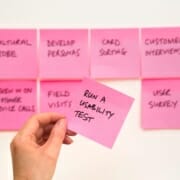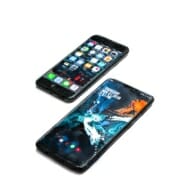What Will Make the Users Happy? Five Key Elements of Great UX Design
As a mobile app developer, your goal, like everybody else, is to create the best app without spending too much of your time, effort, and money. The same goes for users who expect their apps to be responsive, quick, and efficient.
Thanks to the free market, competition has soared. The increasingly cutthroat market is unforgiving to companies that churn out boring and shoddy apps. To keep your head above the water, you need to pass the bare minimum requirements. One of these is having a highly responsive UX or user interface.
An intuitive UX is the backbone of any app. It focuses on structuring an app’s components and elements appropriately to enhance the user flow. If your app doesn’t prioritize the end-user experience, it won’t last for long.
The problem is that user needs and expectations have drastically changed during the past decade. The need of the hour is for app designers to anticipate these changes to stay ahead of the curve. Let’s cover the five basic elements that make up great UX design.
1. Simplify the User Journey
Users engage withmobile apps with a specific goal in mind, which they want to achieve in the shortest time possible. Apps that have a good UX simplify a user’s journey by saving their time.
Here’s the rule of thumb: if it can be simplified, then it should. The idea is to reduce the number of steps users must take to perform their intended action.
Apps with a good UX do this by presenting information in a clutter-free dashboard that provides a smooth navigational flow. Some of the key things to keep in mind include:
- Linear design: Linear design gives users an idea about the time it will take to complete their task. It gives users the ability to complete one action at a time, which is important for consistency.
- Progressive disclosure: This strategy manages the complexity of user information by only showing the vital pieces of information to users when they need it. The idea is to reduce the overflow of information on their screens.
- Anticipatory design: This fairly new UX pattern seeks to create a delightful user experience by eliminating needless choices and responding to user needs one step before they express those needs.
- Visually-rich content: Visually-rich content can captivate users, simplify navigation, and inspire users to explore further.
2. Organize Content
Try to organize the content so that it appeals to users. Your goal should be to ensure that nothing gets in the way of the user’s exposure to your app’s content. This means eliminating unnecessary distractions and any visual clutter, shining the spotlight on the essence of the message you want to convey. Visual cues such as contrasting colors for CTA links are good at guiding users from point A to point B.
Try to eliminate irrelevant information that only seems to get in the way. This allows users to effortlessly pick up on useful information.
3. Personalize the App
Personalizing an app can be a time-consuming task that is also overwhelming, but one that ultimately pays off. Recent trends are shifting from generic experiences to personalized experiences because the latter save time and get more user attention. Researchers from McKinsey found that businesses that deliver personalized experiences can boost their sales by more than 10%.
Advances in artificial intelligence and machine learning make this a walk in the park. Most companies do this by asking their customers to take style quizzes so they can obtain more information about their lifestyle and preferences.
4. Biometric Authentication
Many mobile apps are adopting biometric authentication because it minimizes the risk of getting hacked and makes it convenient for users to verify their identity. Moreover, biometric technology is becoming increasingly available because devices can recognize a person’s identity based on particular characteristics.
Instead of having a laundry list of passwords for different apps, biometrics allows users to verify their identity with fingerprints and even voice or facial recognition.
5. Minimize Data Input
Another important area of app UX is to minimize the amount of user input required. Most users have an attention span of less than 8 seconds, which leaves a very short window for designers. The more data a person must enter into an app, the more likely they are to abandon the app and move on.
It’s no big deal to fill out a form with three or four fields on a desktop, but expecting the same on a mobile app turns users away. Most apps do this by giving users the option to use one of their existing accounts (such as a Google, Twitter, or Facebook account) instead of signing up from scratch. The only thing users now must do is to tap on authorize access for a new registration.
Do keep in mind that some users are a little skeptical about linking their accounts and would rather take the time to fill out the form.













Leave a Reply
Want to join the discussion?Feel free to contribute!